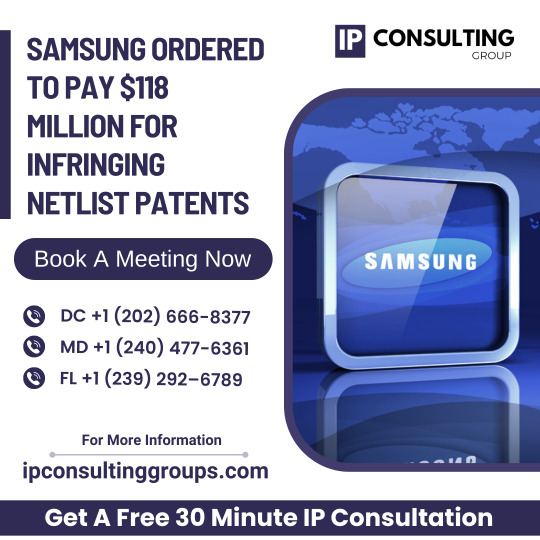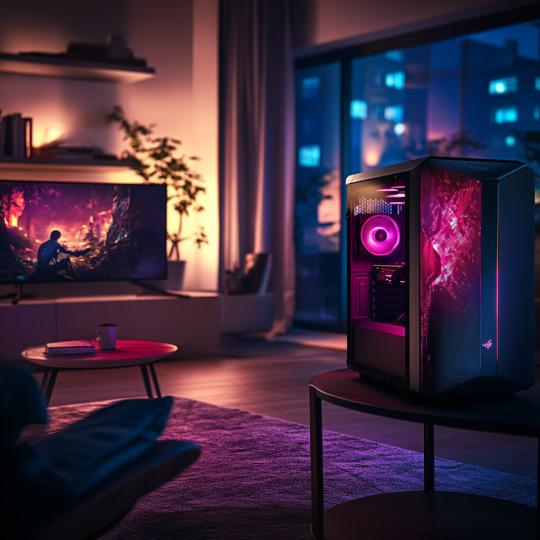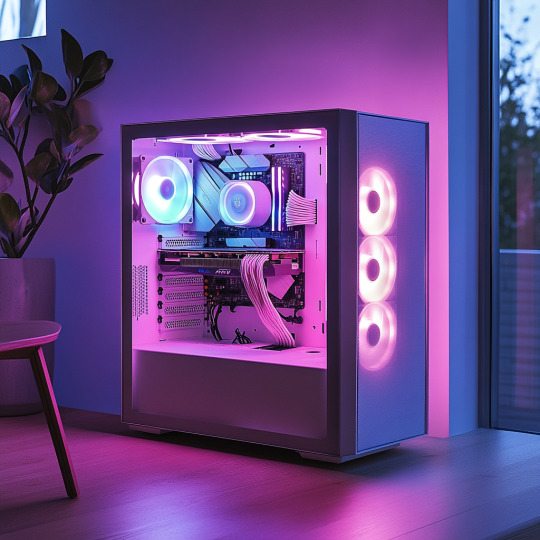#Memorytechnology
Explore tagged Tumblr posts
Text

🎯 Samsung Ordered to Pay $118 Million for Infringing Netlist Patents
A federal jury in Marshall, Texas, has ordered Samsung Electronics to pay $118 million in damages to Netlist, a computer memory company, following a patent dispute over technology designed to enhance data processing in high-performance memory products. This decision comes after a similar ruling last year, where Samsung was ordered to pay $303 million to the Irvine, California-based company.
In a separate case, Netlist secured $445 million in damages from Micron Technology in May for infringing on related patents. Representatives from both Samsung and Netlist have not yet commented on the latest verdict. The jury also found Samsung’s infringement to be willful, which could lead to the damages being tripled by the court.
Netlist initially filed the lawsuit against Samsung in 2022, claiming that its memory modules, used in cloud servers and other data-intensive applications, violated Netlist’s patents. According to Netlist, their patented innovations improve memory efficiency and allow faster processing of large data sets.
Samsung refuted the allegations, arguing the patents were invalid and that its technology operated differently. The company has also filed a separate lawsuit in Delaware, accusing Netlist of failing to provide fair licensing terms for technology aligned with international standards.
Contact Us DC: +1 (202) 666-8377 MD: +1 (240) 477-6361 FL +1 (239) 292–6789 Website: https://www.ipconsultinggroups.com/ Mail: [email protected] Headquarters: 9009 Shady Grove Ct. Gaithersburg, MD 20877 Branch Office: 7734 16th St, NW Washington DC 20012 Branch Office: Vanderbilt Dr, Bonita Spring, FL 34134
#ipconsultinggroup#PatentLawsuit#NetlistVsSamsung#TechLegalNews#MemoryTechnology#PatentInfringement#HighPerformanceMemory#DataProcessing#CloudComputing#LegalVerdict#InnovationProtection#TechDispute#IntellectualProperty#TechnologyNews#SamsungLawsuit#NetlistVictory
0 notes
Text
Next Generation Memory Market Trends and Analysis: Comprehensive Overview of Market Size, Share, Growth
The global next generation memory market size is estimated to reach at USD 22.65 billion in 2030, and is projected to grow at a CAGR of 17.6% from 2024 to 2030. Next-generation memory represents an innovative category of computer memory technologies currently under development. These advancements are aimed at overcoming the limitations associated with traditional memory types like DRAM and NAND Flash. Their primary objective is to offer significant improvements in areas critical to business success, including speed, reliability, energy efficiency, and data storage capacity. Notably, these technologies often provide higher data storage density, allowing organizations to maximize data storage in smaller physical spaces.

Embracing these state-of-the-art solutions can confer a competitive advantage, enabling faster and more efficient data processing, which is an imperative in today's data-centric business landscape. Moreover, emerging technologies such as Artificial Intelligence (AI), Machine Learning (ML), and edge computing heavily rely on memory technologies that facilitate swift access to extensive datasets. These advancements play a pivotal role in facilitating the creation and deployment of cutting-edge applications and services, further driving business innovation.
Next Generation Memory Market Report Highlights
Next-generation memory is a crucial component in modern computing systems, data centers, mobile devices, and a wide range of other applications where fast and reliable data processing is essential
Based on technology, the volatile segment is projected to grow at the fastest CAGR over the forecast period
Based on wafer size, the 200 mm segment is projected to grow at the fastest CAGR of 18.5% over the forecast period
Based on application, the telecommunication segment is projected to grow at the fastest CAGR of 18.5% over the forecast period
For More Details or Sample Copy please visit link @: Next Generation Memory Market Report
The increasing demand for faster data processing directly results from the growing complexity of contemporary applications and workloads, which generate massive volumes of data. This surge in data intensity underscores the critical need for advanced memory technologies capable of seamlessly adapting to the ever-evolving demands of computing systems. Furthermore, with the continuous expansion of the user base for mobile devices and Internet of Things (IoT) applications, the spotlight has shifted firmly toward non-volatile and low-power memory solutions. These innovations are pivotal in ensuring energy efficiency and data preservation, two vital factors significantly influencing mobile devices and IoT systems' performance and durability.
The rapid growth of data centers, particularly within the thriving cloud computing sector, calls for memory solutions that precisely balance speed and energy efficiency. Moreover, the COVID-19 pandemic has notably impacted the next-gen memory market. While the demand for cutting-edge memory technologies continues to grow, primarily due to the growing requirement for rapid and efficient data processing in remote work setups, e-commerce, and digital services, the pandemic has caused disruptions in global supply chains and manufacturing processes. These disruptions have led to delays in producing and distributing critical components essential for developing next-gen memory solutions. This, in turn, has affected the availability and pricing of these components, posing challenges for the industry.
List of major companies in the Next Generation Memory Market
Samsung
Micron Technology, Inc.
Fujitsu
SK HYNIX INC
Honeywell International Inc.
Microchip Technology Inc
Everspin Technologies Inc
Infineon Technologies AG
Kingston Technology Europe Co LLP
KIOXIA Singapore Pte. Ltd
For Customized reports or Special Pricing please visit @: Next Generation Memory Market Analysis Report
We have segmented the global next generation memory market based on technology, wafer size, application, and region.
#NextGenerationMemory#MemoryTechnology#AdvancedMemorySolutions#NonVolatileMemory#EmergingMemoryTechnologies#3DMemory#MemoryChips#DataStorageSolutions#HighSpeedMemory#MemoryDevices#SemiconductorIndustry#DataProcessing#AIandMemory#ComputingHardwareMarket
0 notes
Text
Call Of Duty Black Ops 6 Open Beta With AMD Ryzen & Radeon

Call of duty black ops 6 Release Date
Call of Duty Black Ops 6 Open Beta begins August 30 via AMD Gaming. Call of Duty: Black Ops 6, released October 25, 2024, has severe Campaign, Multiplayer, and Zombie warfare. The early 1990s Gulf War espionage thriller Black Ops is expected. A first-person shooter lover will adore its magnificent set pieces and fast-paced gameplay.
Call of Duty: Black Ops 6 Platforms
All Call of Duty Black Ops 6 pre-orders may access the Open Beta from August 30 to September 4. September 6-9 is the Call of Duty Black Ops 6 Open Beta for all platforms.
The Call of Duty Black Ops 6 Open Beta will include new maps, weapons, game modes, and game-changing features like Omni movement.
With complete cross-play compatibility between PCs and contemporary AMD-powered game consoles, teaming up with your buddies will be simple.
Take control of lobbying with AMD Ryzen CPUs and Radeon graphics
With lightning-fast speed, incredibly realistic visuals, and the newest gaming technology, be ready to dominate the scoreboard.
AMD Ryzen and Radeon Deliver Ultra Performance
To provide an amazing experience, AMD have worked closely with Activision to optimize Call of Duty: Black Ops 6 performance on AMD Ryzen CPUs and Radeon GPUs. Use AMD Smart Access Memory in Call of Duty Black Ops 6 Open Beta to achieve up to 9% greater performance on averagei when teaming Ryzen and Radeon together.
AMD FidelityFX
Enhanced with AMD FidelityFX technology
Hundreds of popular games include AMD FidelityFX, a suite of cutting-edge in-game technologies. AMD FidelityFX appears in three places in Call of Duty: Black Ops 6’s graphics interface:
FidelityFX AMD Super Resolution: AMD FidelityFX Super Resolution 3 improves game framerates with super resolution temporal upscaling and advanced frame creation.
AMD FidelityFX Frame Generation: You may activate Frame Generation on a variety of compatible graphics cards by using the FSR Frame Generation option in your graphics settings.
AMD FidelityFX CAS: A low-performance overhead sharpening slider that may aid in enhancing the details on the edges of players, weapons, and surroundings.
AMD HYPR-RX
Prepare using AMD HYPR-RX and AMD Software 24.8.1
To enhance your performance in the Call of Duty Black Ops 6 Open Beta, prepare for the beta by downloading AMD Software’s Adrenalin Edition Version 24.8.1. To upgrade, just go to AMD.com or utilize the AMD Software version that is presently installed.
Drivers for Windows 10 and Windows 11: Updates for AMD Radeon Series Graphics and Ryzen Chipsets may be automatically detected and installed.
Designed for PCs running Windows 10 64-bit version 1809 or later Windows 11 and above.
Install the downloaded file straight into the system that needs updating.
Drivers for Linux
Updates for AMD Radeon Series Graphics Drivers.
For use with RHEL/CentOS, SLED/SLES, and Ubuntu systems.
AMD FidelityFX Super Resolution 3
With their simple-to-use AMD HYPR-RX toggle, which is part of AMD Software, you can maximize performance in even more games by reducing latency and increasing performance.
AMD Performance Laboratories conducted testing on RX-1123. August 19, 2024, on a test system with a Ryzen 7 7800X3D CPU, 32 GB DDR5-6000 Memory, Windows 11 Pro, and a Radeon RX 7900 XTX (4K), 7700 XT (1440p), and 7600 XT (1080p) (Driver 24.8.1) with AMD Smart Access Memory enabled in Call of Duty: Black Ops 6 (DX12) at extreme settings and AMD FidelityFX Super Resolution 3 Quality + Frame Generation. various settings from various system makers might provide different outcomes. RhX-1123.
GD-187a: A selection of AMD products are compatible with AMD FidelityFX Super Resolution (FSR) versions 1, 2, and 3, which are available on some games that need game developer interaction. When enabling AMD FidelityFX Super Resolution on graphics cards from other manufacturers, AMD does not provide warranty or technical assistance.
AMD performance labs’ testing August 19, 2024, on a test system with a Ryzen 7 7800X3D CPU, 32 GB DDR5-6000 Memory, Windows 11 Pro, and a Radeon RX 7900 XTX (4K), 7800 XT (1440p), and 7600 (1080p) (Driver 24.8.1) with AMD Smart Access Memory technology ON versus OFF in Call of Duty Black Ops 6 Open Beta (DX12) with severe settings. various settings from various system makers might provide different outcomes. RX-1124.
AMD GD-225A: AMD HYPR-RX is compatible with Ryzen 7040 Series APUs with integrated RDNA 3 graphics or AMD Radeon RX 7000 Series GPUs and later. When suitable to certain games, AMD HYPR-RX enables a number of AMD Software capabilities, such as Radeon Super Resolution, FidelityFX Super Resolution, Radeon Anti-Lag, Radeon Anti-Lag+, and Radeon Boost, to run concurrently. GD-225A.
AMD FidelityFX Super Resolution
Outstanding Performance. Maximum Trustworthiness.
Increase the Frame Rate of Your Games
AMD FidelityFX Super Resolution (FSR) delivers incredible high-quality, high-performance gaming on almost any hardware by using state-of-the-art open upscaling and sophisticated frame generation algorithms to help you increase your frame rates in compatible games2.
Accessible Now: AMD FSR 3.1
AMD FidelityFX Super Resolution 3 uses superior frame generation and super resolution temporal upscaling to alter gaming experiences with huge and responsive frame rates in compatible games.3 FSR 3.1 employs the new AMD FidelityFX API, decouples upscaling from frame creation, and enhances upscaling picture quality.
AMD FSR 3 with Advanced Frame Upscaling
Suggested:
Graphics cards AMD Radeon RX 6000 Series and above
GeForce RTX series and above from NVIDIA
GPUs:
AMD Radeon RX 5000 Series and above
To GeForce RTX 20 Series
(For best results, compatible games must be running at 60 frames per second before applying frame generation, which is dependent on the GPU’s capabilities.)
AMD FSR 3 with Upscaling
Suggested:
Graphics cards AMD Radeon RX 5000 Series and above
Up to the NVIDIA GeForce RTX 20 Series
GPU:
AMD Radeon RX 500 Series and higher
Up to the NVIDIA GeForce GTX 10 Series
(AMD FSR 3 upscaling may be utilized with certain AMD Ryzen Processors that include Radeon graphics, although it is geared for usage with separate graphics cards.)
Read more on govindhtech.com
#CallDutyBlackOps6#AMDRyzen#AMdGaming#gamemodes#gamingtechnology#AMDRyzenCPU#AMDFidelityFX#AdrenalinEdition#Memorytechnology#PCrunningWindows#Ubuntusystems#AMD#cpu#Graphicscards#NVIDIAGeForceRTX#technology#technews#news#govindhtech
0 notes
Photo

🔍 What's next for Samsung?! The tech giant is sampling its cutting-edge HBM4 memory to tech leaders like NVIDIA, Google, and Broadcom. Despite previous hurdles with its HBM3, Samsung's hopeful for a turnaround. The HBM market is expected to surge by 10% by 2025, emphasizing the increasing demand for advanced memory technology. Samsung utilizes some of its best technology, including its 4nm process, aiming to meet competitors' standards. The question remains: Will companies trust Samsung's HBM solutions with fierce competition from SK hynix and Micron? Are you excited about the future of memory technology? How do you think Samsung will fare in this high-stakes race? Share your thoughts below! 🚀 #Samsung #HBM4 #TechNews #NVIDIA #Broadcom #Google #MemoryTechnology #Innovation #TechIndustry #Competition #TechTrends
0 notes
Photo

🔥 Who will dominate the HBM3E market—Samsung or Micron? Let's dive into the world of next-gen memory technology! The high-bandwidth memory (HBM) sector is heating up as Micron, Samsung, and SK Hynix race for dominance. With Micron's groundbreaking 12-layer HBM3E hitting speeds up to 9.2 Gbps, they're poised to become NVIDIA's top choice. However, Samsung strives to keep pace by enhancing its 8-layer solution, vying to balance the competitive scales. Why does this matter? These companies are revolutionizing the AI server landscape, driven by NVIDIA's demand. As they race forward, they pave the path for advanced computing capabilities, promising unprecedented performance. 🔍 Which contender do you think will emerge as the leader in revolutionizing HBM technology, and why? Share your thoughts! #GroovyComputers #Micron #Samsung #SKHynix #HBM3E #MemoryTechnology #NVIDIAPartner #AIComputing #TechInnovation #ComputerHardware #HighPerformanceComputing 🖥️
0 notes